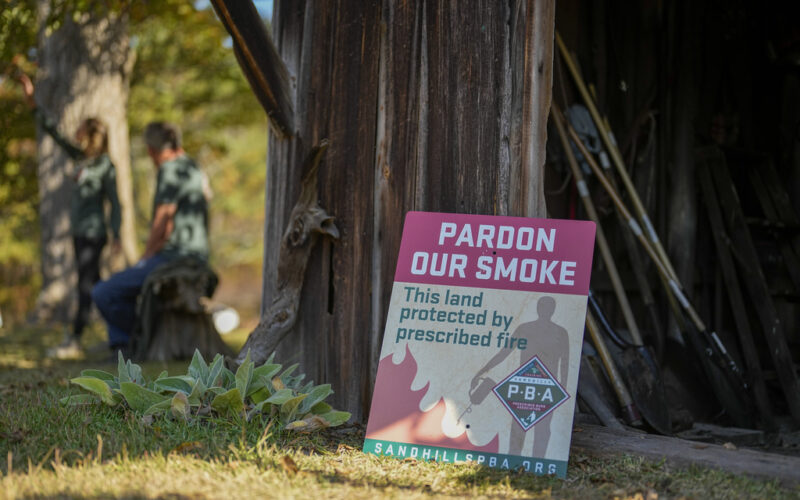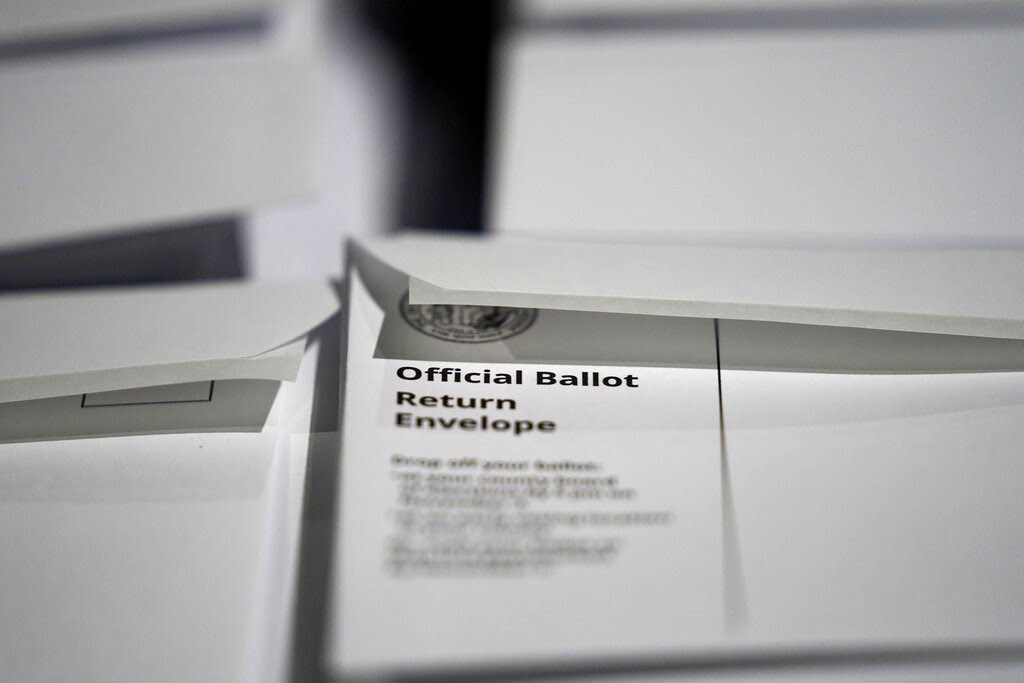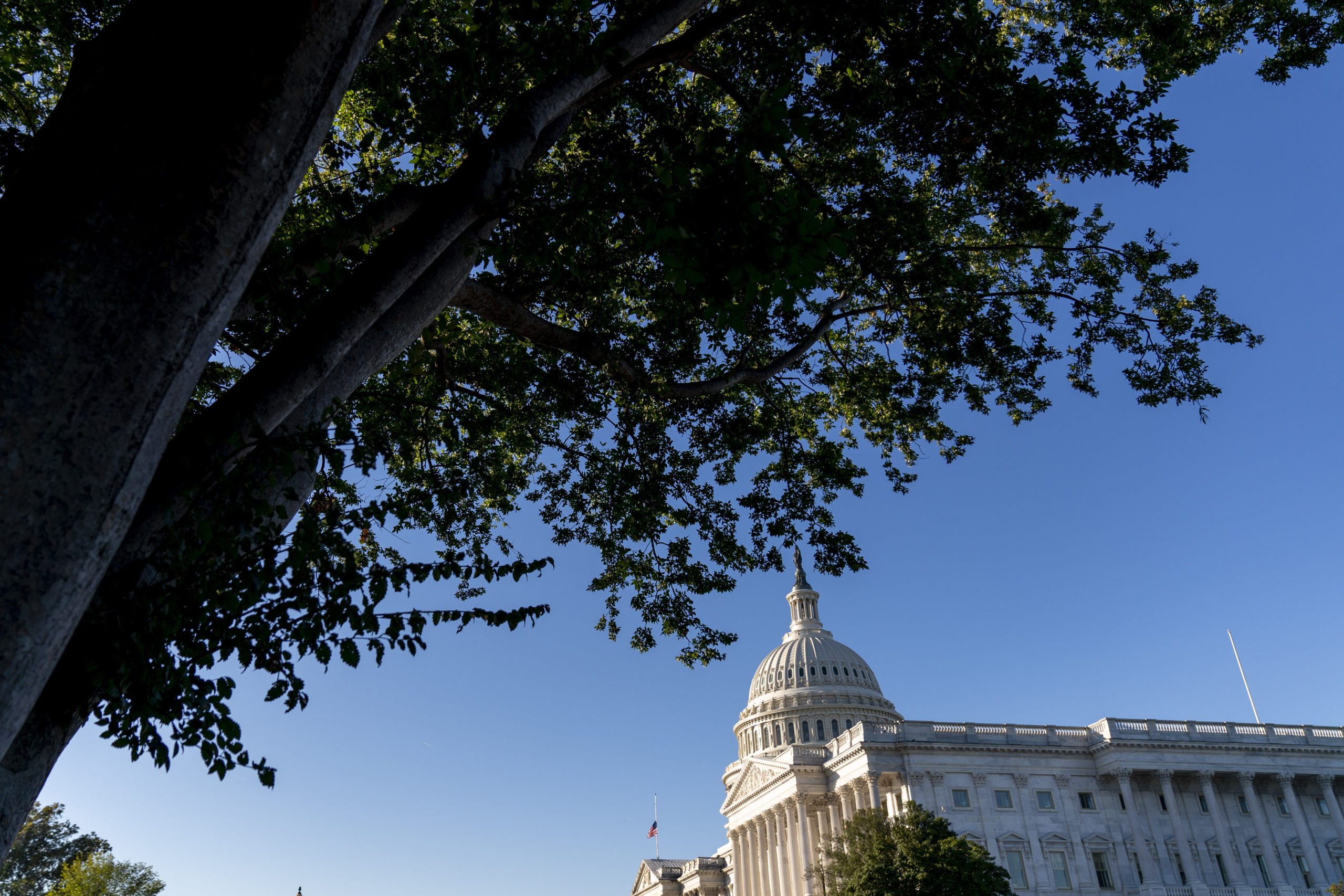WEST END — Jesse Wimberley burns the woods with neighbors.
Using new tools to revive an old communal tradition, they set fire to wiregrasses and forest debris with a drip torch, corralling embers with leaf blowers.
Wimberley, 65, gathers groups across eight North Carolina counties to starve future wildfires by lighting leaf litter ablaze. The burns clear space for longleaf pine, a tree species whose seeds won’t sprout on undergrowth blocking bare soil. Since 2016, the fourth-generation burner has fueled a burgeoning movement to formalize these volunteer ranks.
Prescribed burn associations are proving key to conservationists’ efforts to restore a longleaf pine range forming the backbone of forest ecology in the American Southeast. Volunteer teams, many working private land where participants reside or make a living, are filling service and knowledge gaps one blaze at a time.
Prescribed fires, the intentional burning replicating natural fires crucial for forest health, require more hands than experts can supply. In North Carolina, the practice sometimes ends with a barbecue.
“Southerners like coming together and doing things and helping each other and having some food,” Wimberley said. “Fire is not something you do by yourself.”
More than 100 associations exist throughout 18 states, according to North Carolina State University researchers, and the Southeast is a hot spot for new ones. Wimberley’s Sandhills Prescribed Burn Association is considered the region’s first, and the group reports having helped up to 500 people clear land or learn how to do it themselves.
The proliferation follows federal officials’ push in the past century to suppress forest fires. The policy sought to protect the expanding footprint of private homes and interrupted fire cycles that accompanied longleaf evolution, which Indigenous people and early settlers simulated through targeted burns.
“Fire is medicine and it heals the land. It’s also medicine for our people,” said Courtney Steed, outreach coordinator for the Sandhills Prescribed Burn Association and a Lumbee Tribe member. “It’s putting us back in touch with our traditions.”
The longleaf pine ecosystem spans just 3% of the 140,000 square miles (360,000 square kilometers) it encompassed before industrialization and urbanization. But some pockets remain, from Virginia to Texas to Florida. The system’s greenery still harbors the bobwhite quail and other declining species. The conifers are especially resistant to droughts, a hazard growing more common and more severe due to climate change.
A big tent of environmentalists, hunters, nonprofit groups and government agencies recently celebrated a 53% increase in the longleaf pine range since 2009, spanning an estimated 8,100 square miles (20,000 square kilometers). However, those strides fell short of their goal to hit 12,500 square miles (32,000 square kilometers).
Private landowners are central to the coalition’s latest restoration effort. They hold roughly 86% of forested land in the South, according to America’s Longleaf Restoration Initiative.
The partnership needs thousands of new landowners to support longleaf management on their properties. The nascent burn associations are vital in their education, according to a 15-year plan released in November.
Federal agencies back the endeavor through activities such as invasive species removal and land management workshops. Nearly $50 million in federal grants are available for projects bolstering forest health, including prescribed fire.
The U.S. Department of Agriculture has a “Longleaf Pine Initiative” partnering with burn groups like Wimberley’s. Farm bill money supports planning and planting. Personnel can help install firebreaks.
But applicants are increasingly competing for limited funding that cannot cover all the needed maintenance burns, Longleaf Pine Initiative Coordinator Matthew Vandersande said.
Landowners say liability-concerned states are reluctant to send their relatively few burners onto private property and private contractors cannot meet the demand.
“When it comes time to drop the match, you’re kind of on your own,” said Keith Tribble, 62, who owns a North Carolina tree farm.
While state forestry services provide classes, Tribble credits burn associations for the hands-on experience and crews needed to confidently manage the pines.
Humidity and wind speed are the biggest factors in a burn plan, according to Hitchcock Woods Superintendent Bennett Tucker, manager of a private forest in South Carolina. The pine’s oils allow it to almost always carry fire and it typically burns at a relative humidity between 25% and 50%.
“With a prescribed fire, we can control the where, the when, the how and all those factors by choosing the best conditions,” Tucker said.
Handheld weather meters ensure wind speed, temperature and humidity fall within limits under plans written beforehand. The prescriptions also can reduce potential liability in the event a fire escapes. Runaway fires are rare, according to studies of federal agencies and surveys of community burn groups. Wimberley’s teams haven’t had one yet, even with 40 burns per year.
Climate change is reducing the number of safe burn days. Rising temperatures cause lower relative humidity in the South and intensify periods when it’s too dry, said Jennifer Fawcett, a North Carolina State University wildland fire expert.
As the severity and frequency of storms, droughts and wildfires increase, longleaf pines could become even more important for ecological resilience in the South. Deep roots anchor them during strong winds and stretch far into the ground for water. Flames enhance soil nutrients.
Further, the surrounding ecosystems have few known rivals for biodiversity in the U.S. Light pours through open canopies onto the sparse floor, giving way to flora like an insect-eating plant that needs sun exposure and wet soil. Gopher tortoises feed on the native vegetation and dig up to 15-foot (4.5-meter) burrows sheltering other at-risk species.
“It’s more than just planting trees,” said Lisa Lord, The Longleaf Alliance conservation programs director. “We want to take the time to restore all of the values of the forest.”
A late 1920s education campaign known as the “Dixie Crusaders” harmed those interdependent relationships. Federal officials turned southerners against the practice and burning fell off. Flammable needles and wiregrasses piled up to dangerous tinder levels.
Wimberley’s family resisted, knowing their livelihoods depended on fire. His ancestors first applied it to “sweat” out the pine’s lucrative sap distilled into turpentine or exported as sealants. Later generations burned to shield crops.
Burning looks different from the times Wimberley’s mother dragged kindling known as “fat lighter” through the forest. But public understanding of its importance is returning and the ranks are growing.
“We’re all a bunch of pyromaniacs,” said Tribble, the tree farm owner.
Still, Tribble burns for a reason: he values connecting with people and the land.
Before his burns, brush cluttered the ground, choking water flow to parts of the property that were “bone dry.” Now water runs from more marshy areas and the squeaky call of the rarely spotted red-cockaded woodpecker resounds from mature pines. Wild turkeys appear when smoke fills the sky.
Steed, the Lumbee outreach coordinator, is heartened by the rekindling of this proactive “fire culture” beyond the tribe that she says introduced it to the region.
She ran through her grandfather’s scorched woods as a child, but the expanse has gone about a decade without fire. Steed plans to lead her first burn next year in Wimberley’s woods and then manage a family property she recently inherited.
“It feels empowering,” Steed said of prescribed fire. “It feels like a very tangible way to connect to the past and also guide the future.”
Pollard is a corps member for the Associated Press/Report for America Statehouse News Initiative. Report for America is a nonprofit national service program that places journalists in local newsrooms to report on undercovered issues.




